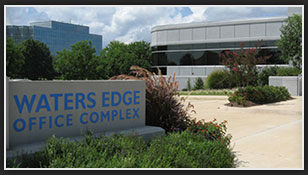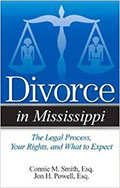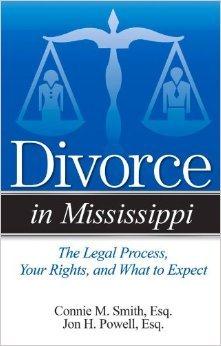REPORT FROM COUNSEL
SPRING 2012 ISSUE
ADA PRIMER FOR SMALL BUSINESSES
The Department of Justice (DOJ) recently revised its regulations implementing the Americans with Disabilities Act (ADA). This revision clarifies some issues that have arisen over the past 20 years and contains some new requirements, including the 2010 Standards for Accessible Design. DOJ has published a document, ADA Update: A Primer for Small Business, which provides guidance to assist small business owners in understanding how the new regulations apply and how to comply with them. The Primer can be viewed by going to www.ada.gov.
Public Accommodations
Title III of the ADA, on “public accommodations,” applies to both the built environment and to policies and procedures that affect how a business provides goods and services to its customers. The Primer can help small businesses avoid the unintentional exclusion of people with disabilities, and it will also help them know when they need to remove barriers in their existing facilities.
Practically all types of businesses that serve the public are covered by the ADA, regardless of the size of the business or the age of its buildings. Covered businesses must make “reasonable modifications” to their business policies and procedures when necessary to serve customers with disabilities. They must also take steps to communicate effectively with customers with disabilities. It is a business’s responsibility to provide a sign language, oral interpreter, or video remote interpreting (VRI) service, unless doing so in a particular situation would result in significant difficulty or expense in light of the business’s overall resources. If a specific communication method would be an undue burden, a business must provide an effective alternative if there is one.
Businesses must allow people with disabilities to use mobility devices in all areas in which customers are allowed. Public accommodations must permit individuals who use these devices to enter their premises, unless the business can demonstrate that the particular type of device cannot be accommodated because of legitimate safety requirements that are based on actual risks, not stereotypes.
The ADA mandates that businesses remove architectural barriers in existing buildings and make sure that newly built or altered facilities are constructed to be accessible to individuals with disabilities. Commercial facilities such as office buildings, factories, warehouses, or other facilities that do not provide goods or services directly to the public are subject to the ADA’s requirements only for new construction and alterations.
Regarding the built environment, the ADA strikes a careful balance between increasing access for people with disabilities and recognizing the financial constraints many small businesses face. Flexible requirements allow businesses with limited financial resources to improve accessibility without excessive costs.
Updated Standards
The ADA’s regulations and the ADA Standards for Accessible Design, originally published in 1991, set the standard for what makes a facility accessible. While the updated 2010 Standards keep many of the original provisions in the 1991 Standards, they do contain some significant differences. The 2010 Standards are the key for determining whether a small business’s facilities are accessible under the ADA, but they are used differently depending on whether the small business is altering an existing building, building a brand-new facility, or removing architectural barriers that have existed for years.
Since March 15, 2011, businesses have had to comply with the ADA’s general nondiscrimination requirements, including the provisions related to policies and procedures and effective communication. The deadline for complying with the 2010 Standards, which detail the technical rules for building accessibility, is March 15, 2012. The delay was meant to give businesses enough time to plan for implementing the new requirements for facilities.
FELINE FRIEND 1, IRS 0
Some say the world is divided between dog lovers and cat lovers. Jan is the latter.
She has seven cats of her own that live with her in her modest California home. But Jan also puts her modest financial means where her mouth is. As a volunteer for a local IRS-approved charity, she has taken care of some 70 stray cats at her home while adoptive homes were being found for them. The charity’s mission is to trap stray cats, neuter them, and then place them in homes temporarily until they can be adopted or released.
Jan’s unreimbursed expenses for so many cats had a way of adding up fast. In a recent tax year, she claimed a deduction on her income tax return for that year’s expenses of more than $12,000, for everything from food and vet bills to kitty litter. The IRS took a dim view of the deduction, contending that the expenses were all personal nondeductible expenses and disallowing the deduction.
Representing herself because she could not afford to hire a lawyer, Jan handled her case all the way to the U.S. Tax Court, which sets precedents sometimes having broad application nationally. In that venue, she won on the most important issues, thereby improving the financial prospects for volunteers nationwide, especially those who incur unreimbursed expenses that can be shown to further the missions of groups like Jan’s. There are more than 1.5 million IRS-recognized charities in the United States.
The Tax Court judge agreed with most of Jan’s contentions. He permitted her to deduct most of her bills for feral cats, since such bills had been incurred to help a charitable group fulfill its mission. A couple of items were disallowed, such as the cost of cremating a cat and of repairing Jan’s wet/dry vacuum. The deductible expenses included 90% of Jan’s vet bills and 50% of her cleaning supplies and utility bills.
The total deduction was reduced somewhat for a reason that should be noted by others who might follow Jan’s example—she didn’t have a valid letter from the charity acknowledging her volunteer work for expenses of $250 or more. In addition to getting such a letter, the taxpayer needs to keep good records of the pertinent expenses.
In Jan’s case, the court ruled that the regulatory requirements for money contributions governed her expenses of less than $250. Her records for such expenses were acceptable substitutes for canceled checks, under the “substantial compliance” doctrine.
FCRA AND PREEMPTION OF STATE LAW CLAIMS
With a view toward getting a full measure of justice for debtors who may have been wronged by a violation of the federal Fair Credit Reporting Act (FCRA), attorneys often will add to their pleadings claims under state law arising under the common law (court-made law) or state statutes.
Any time there is such a combination of federal and state causes of action, there is the potential for a defense based on federal preemption—the principle that when Congress passed federal legislation, it meant for such a remedy to take the place of and preclude any state law claims. In two recent cases, courts reached opposite results when this issue arose in lawsuits brought by debtors.
Welcome to My Credit Card
In the first case, the plaintiff’s hospitality was punished when his houseguest took his credit card and racked up over $7,000 in unauthorized charges. Upon discovering this, the plaintiff contacted the bank that had issued the card. The bank acknowledged that the charges had not been authorized and that the plaintiff was not personally liable for them. However, it then proceeded to refer the account to a collection agency.
Among the claims asserted by the plaintiff in the litigation that ensued were claims for libel, credit libel, and violation of a state consumer protection law. The bank’s argument that the FCRA prevented these state law claims was rejected by a state supreme court. There are some specific preemption provisions in the FCRA, and one of them applies to the responsibilities of persons who furnish information to consumer reporting agencies. The bank’s reliance on this provision for its preemption defense was misplaced.
The bank had been a furnisher of information, but the party to whom it had given that information was not a “consumer reporting agency”; it was instead just a debt collection agency. The agency collected the information on the plaintiff simply for the purpose of collecting an alleged debt, not to enable it to furnish a consumer report to another end user of that information.
You May Not Proceed
In the second case, a major bank allegedly told credit agencies that the plaintiff was behind on payments on a loan, even though the bank knew that she was not. When the plaintiff brought suit in federal court under the FCRA, she added state law causes of action for defamation, invasion of privacy, and negligence. After the FCRA claim had been dismissed for an unrelated reason, a federal appeals court ruled that the plaintiff was also precluded from going forward with her state law claims.
A pertinent provision in the FCRA states that no requirement or prohibition may be imposed under the “laws” of any state, but the lower court read this to refer only to state statutes, not to the common law of a state. The appeals court reversed the lower court. “Laws,” as used in the FCRA provision, must be read to embrace all sources of law, whether derived from the legislature or state court decisions. As the court put it, “what reason would the legislature have had for preempting state statutes regulating information to credit bureaus, while not preempting state common law regulating the same subject?”
CAR HORN HONKING AS FREE SPEECH
When Helen was reported to her homeowners association by a neighbor for violating a restrictive covenant against keeping chickens, she picked a rather odd way of getting even with the neighbor. She had to borrow a friend’s car to do it, but she stopped the car in front of the neighbor’s house at 6 a.m. and laid on the horn for 10 minutes.
The neighbor called the police, who first spoke with Helen and then went to get the neighbor’s statement. Unable to leave well enough alone, Helen then drove past the neighbor’s house and let out three more loud horn blasts for good measure. This promptly led to her arrest by the police officer and her subsequent conviction for violating the local noise ordinance barring the sounding of a horn except for public safety purposes or at officially sanctioned parades or public events.
Helen’s conduct hardly summons up comparisons with grand orations on vital issues of the day, but her conviction was overturned by a state supreme court. More specifically, the county noise ordinance under which she had been arrested was struck down as being impermissibly overbroad, in violation of free speech protections of the federal and state constitutions, because horn honking could clearly be a form of expressive conduct in certain circumstances and the ordinance swept into its prohibition many such instances of “protected honking.”
The court stated that the facts of the case were not critical in an overbreadth challenge. The larger principle was that there was a realistic danger that the ordinance would significantly compromise recognized free speech rights of parties not even before the court. Horn honking as a way to vent anger about a rather petty dispute between neighbors may not ring true as speech worthy of protection, but the court advanced some other, more plausible scenarios of honking as protected speech: a driver for a carpool toots the horn to let another worker know it is time to go; a driver responds to a sign saying “honk if you support our troops”; wedding guests celebrate the newlyweds’ departure from the church with their car horns; or a driver honks in support of an individual picketing on a street corner.
Because these actions were swept within the ordinance’s prohibition, as well as any other forms of car horn honking that did not involve public safety or an officially sanctioned parade or public event, the ordinance and Helen’s conviction could not stand. The court suggested that a properly tailored ordinance, prohibiting, say, disturbing horn honking that is meant to annoy or harass, might have survived, but that was not the ordinance that led to Helen’s arrest. In short, you might say that Helen had the last “honk” after all.
ESTATE PLANNING: PRIVATE REVERSE MORTGAGES
Reverse mortgages, usually obtained from financial institutions, allow people who are at least 62 years of age to convert their home equity into cash, which is received by the homeowner either as a lump sum, a line of credit, or monthly payments. The loan becomes due, with interest, when the borrower dies, moves out of the home, sells it, or fails to pay property taxes or homeowners insurance. The end result is often that heirs of the owner sell the house, pay off the loan, and keep the difference.
Since an institution involved in a reverse mortgage is advancing money without knowing for sure when it will be repaid, there are high up-front costs for commercial reverse mortgages. Fees can be as much as 5% of a home’s value, and required mortgage insurance premiums can range from 0.1% for loans with a low payout to 2% for those with a higher payout.
In large part because of these high fees and costs in the commercial sector, but also to reduce paperwork and to increase the amount of equity an owner can tap, some families set up private reverse mortgages. A private reverse mortgage is basically a private loan to the homeowner, usually from a family member, that is secured by a mortgage on the senior’s house.
Advantages
For the senior homeowner, a private reverse mortgage can have these advantages:
- The costs of having an attorney set up the mortgage should be reasonable and a lot less than the costs of a conventional reverse mortgage with a bank, and there are no ongoing mortgage insurance costs. Also, the interest rate, set each month by the IRS, should be less than the rate on a commercial mortgage.
- Since there is no limit on the percentage of the home equity that can be borrowed, the owner can tap into more of that equity and put farther off the day when he or she has to move for financial reasons.
- A private reverse mortgage need not be paid back until the house is sold, leaving open the option of the owner’s moving to a nursing home but keeping the house.
- The owner can continue to receive payments on the mortgage if needed to maintain the house or to pay for extra care at a nursing home.
For the lending family members, the arrangement can have these advantages over a reverse mortgage with a financial institution:
- The financial benefits for the senior family member carry forward to the whole family, because savings on mortgage costs should translate into a bigger estate ultimately passing on to surviving family members.
- The flexibility to tap into more equity in the home could give family members the option to hire more paid caregivers or even to pay themselves for providing such care.
- Even though interest rates for private reverse mortgages set by the IRS are pretty low, they still return more than can be earned in money market accounts or certificates of deposit. In other words, it beats having money just sitting in a bank.
Caution
There are some cautionary aspects to private reverse mortgages. Lending family members need to anticipate that the money they advance may not come back to them for a long time. It is also prudent to consider that there is some risk that the entire loan may not be paid back, if the ultimate proceeds from the sale of the home are insufficient to pay off the loan, with interest. Of course, these and any other concerns should be fully aired and taken into account when the private reverse mortgage is being contemplated in the first place and when its terms are set.
THE MYSTERY OF THE OLD BANK ACCOUNT
Keeping track of personal finances can become like detective work when there is scant evidence of items such as an old bank account or a receipt for a safe-deposit box. This situation arises most commonly for executors of estates or for someone who is taking care of financial matters for an ill or elderly friend or relative. The first job is to determine whether the financial institution is still open, has closed, or has merged with another entity. The Federal Deposit Insurance Corporation (FDIC) maintains “Bank Find,” an online database that allows you to trace the history of any FDIC-insured institution and to find contact information for open institutions.
Once the bank is located, you can ask whether the account is still there in your name or in that of a loved one. For inquiries about someone else’s account, expect to be asked to produce appropriate documents, such as a death certificate, a court appointment as an executor, or a power of attorney or similar directive from a living person.
If the account was classified as abandoned under state law, its contents would have been transferred to the unclaimed property office in the state of the owner’s last known address. You can check to see whether any property is being held by the state by using a website maintained by the National Association of Unclaimed Property Administrators (www.unclaimed.org).
When the account is tracked down, you can collect the assets by presenting satisfactory proof of ownership. If the assets wound up with the state, it is possible that the state will have sold off the assets because of lack of storage space. In that event, in most instances the original owner or heirs would still have the right to claim the proceeds from that sale.





